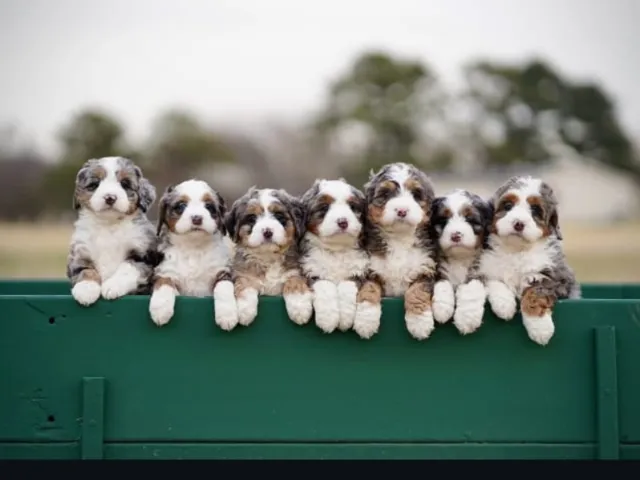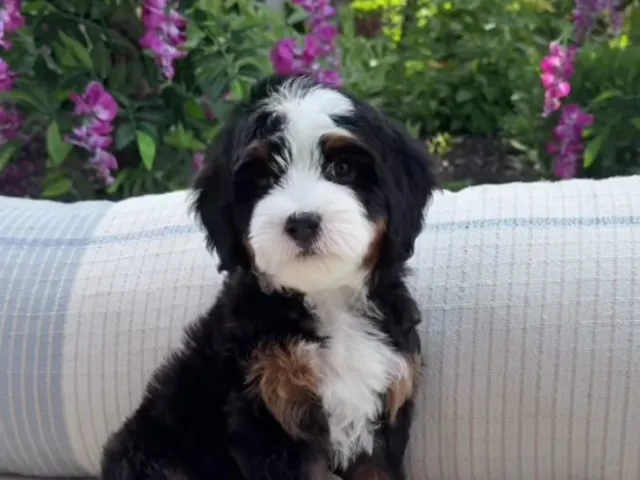Genetic Influences on Bernedoodle Coat Types and Hypoallergenic Properties
When considering a Bernedoodle, coat type is one of the most important traits prospective owners should understand. The coat doesn’t just influence appearance—it affects grooming needs, shedding levels, and how allergy-friendly your dog may be. This blog explores the genetic influences behind Bernedoodle coats, their variations, and what it means for dog lovers, especially those with allergies.
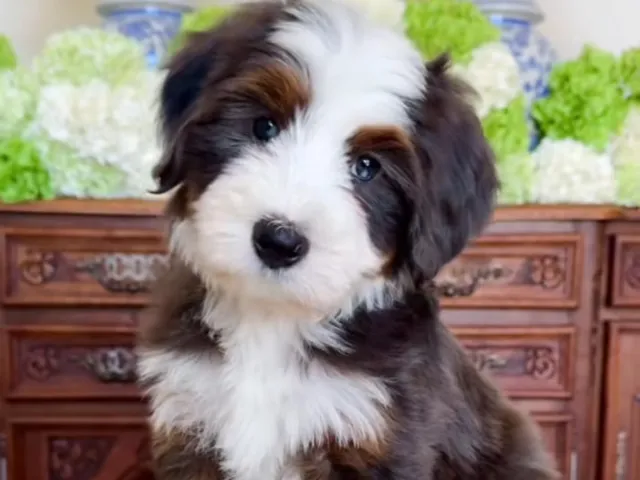
How Genetics Shape Bernedoodle Coats
Bernedoodles are a cross between a Bernese Mountain Dog and a Poodle. Because these parent breeds have vastly different coat types, the offspring inherit a wide variety of coat textures and lengths.
- Bernese Mountain Dogs have long, straight double coats that shed heavily.
- Poodles have dense, curly, single-layered coats that shed minimally and are considered more allergy-friendly.
The mix of these traits results in three primary coat types in Bernedoodles:
- Straight Coat (Flat Coat): Resembles the Bernese parent more closely, tends to shed more, and is not hypoallergenic.
- Wavy Coat (Fleece Coat): A balanced mix between both breeds. Minimal shedding and relatively allergy-friendly.
- Curly Coat (Wool Coat): Strongly influenced by the Poodle. Least shedding and best for allergy-sensitive households.

Bernedoodle Generations & Coat Predictability
The generation of a Bernedoodle significantly influences coat type. Here’s a breakdown:
- F1 Bernedoodle (50% Poodle, 50% Bernese): Typically have wavy or straight coats. Moderate shedding. Less predictable hypoallergenic properties.
- F1B Bernedoodle (75% Poodle, 25% Bernese): More likely to have curly, low-shedding coats. Ideal for allergy sufferers.
- F1BB Bernedoodle (87.5% Poodle): Highly likely to inherit the Poodle’s curly, hypoallergenic coat. Very low shedding.
- F2/F2B and Multigen Bernedoodles: Vary depending on breeding goals and coat gene testing. Ethical breeders often test for curl, furnishing, and shedding genes to create allergy-friendly coats.
Tip: Always ask the breeder about coat testing and generational mix to understand what coat traits your puppy might have.
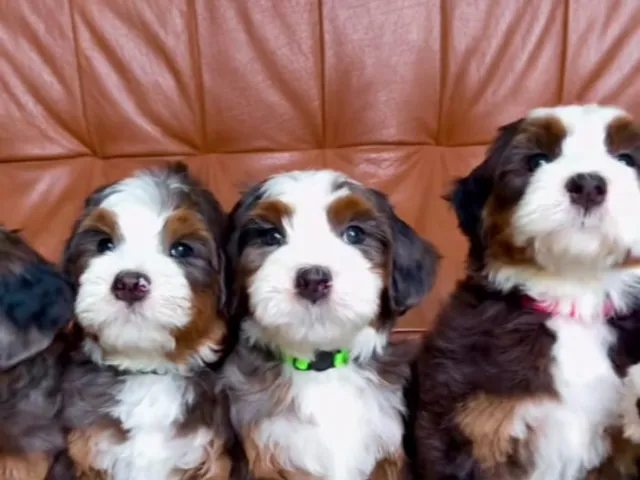
Shedding and Hypoallergenic Qualities
While no dog is truly 100% hypoallergenic, curly and fleece-coated Bernedoodles shed significantly less and are often suitable for families with mild allergies.
- Straight coats tend to shed more, especially seasonally.
- Wavy coats have minimal shedding, especially if brushed regularly.
- Curly coats trap dander and loose hair, reducing airborne allergens but requiring frequent grooming.
Important Note: Hypoallergenic doesn’t mean allergen-free. Individuals with severe allergies should spend time with the breed before committing.

Grooming Based on Coat Type
Each coat type requires different grooming levels:
- Straight: Brush 2–3 times per week; seasonal shedding.
- Wavy: Brush every 2–3 days to prevent matting.
- Curly: Daily brushing plus professional grooming every 6–8 weeks.
Curly coats mat easily without maintenance. Even low-shedding coats need regular upkeep to avoid painful tangles and skin issues.
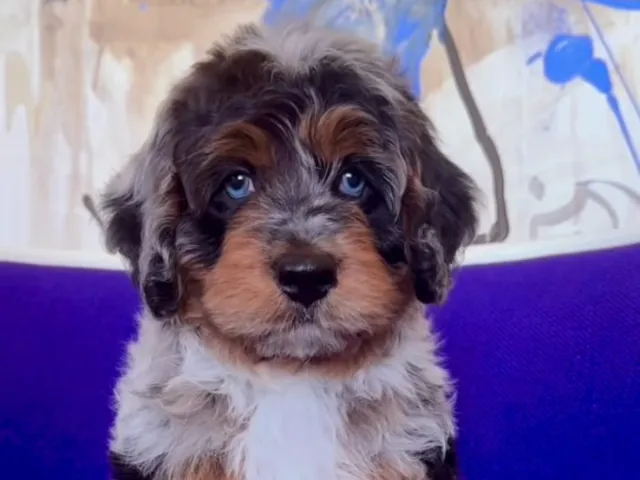
Coat Colors & Patterns
Bernedoodles are known for their stunning variety of coat colors, which are also influenced by genetics:
- Tricolor (Black, White, Tan): Most popular and closely resembles the Bernese.
- Phantom: Two-tone coats with defined color points.
- Merle: Marbled appearance, often seen in multigenerational litters.
- Parti & Sable: Rare and eye-catching patterns.
Color does not influence shedding or allergy response but does contribute to the uniqueness of each dog.
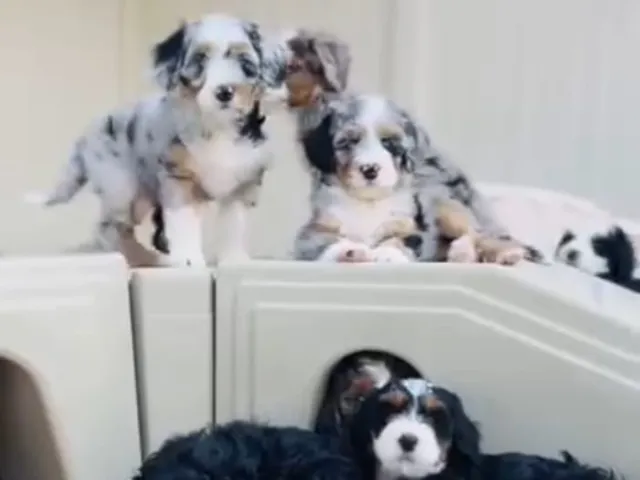
Final Words
Understanding the genetic influences behind Bernedoodle coat types helps future dog owners choose the right companion for their lifestyle and health needs. Whether you’re looking for a low-shedding friend or a curly-coated cuddle buddy, there’s a Bernedoodle out there for you.
Thinking of adopting? Choose responsibly. Ask your breeder about coat testing and health screening to ensure you find the best fit.
Sources:
- American Kennel Club – Poodle Coat Genetics
- SwissRidge Bernedoodles – Coat Types Explained
- Bernedoodle Guide – Generational Differences
- Vetstreet – Are Hypoallergenic Dogs Real?
Want to know more about Bernedoodles and how they behave with families, kids, or seniors? Explore our complete Bernedoodle care and training guide.
If you’re curious how Bernedoodles compare to other popular family dogs, you might want to explore the traits of Golden Retrievers. Known for their loyalty and gentle nature, Golden Retrievers are another excellent choice for first-time owners. Read our detailed comparison on Bernedoodles vs Golden Retrievers.

